
Two killed as clashes erupt across West Bank over Trump’s Jerusalem shift
Palestinians clashed with Israeli troops across the West Bank and Gaza, and Muslim worshippers across the world poured into the streets after Friday prayers to protest President Donald Trump’s recognition of contested Jerusalem as Israel’s capital.
Across the Arab and Muslim worlds, thousands of protesters took to the streets on the Muslim holy day to express solidarity with the Palestinians and outrage at Trump’s reversal of decades of U.S. policy.
Israeli soldiers shot dead a Palestinian man near the Gaza border, the first confirmed death in two days of unrest. Scores of people were wounded on the “Day of Rage”. A second person later died of their wounds, a Gaza hospital official said.
The Israeli army said hundreds of Palestinians were rolling burning tyres and throwing rocks at soldiers across the border.
“During the riots IDF soldiers fired selectively towards two main instigators and hits were confirmed,” it said.
More than 80 Palestinians were wounded in the occupied West Bank and Gaza by Israeli live fire and rubber bullets, according to the Palestinian Red Crescent ambulance service. Dozens more suffered from tear gas inhalation. Thirty-one were wounded on Thursday.
In what appeared to be an attempt to calm rising tempers, US Secretary of State Rex Tillerson insisted Jerusalem’s future could only be determined by Israelis and Palestinians. But at the same time, he said moving the US embassy from Tel Aviv to the city could happen in about two years.
Protesters burned Israeli and US flags or stomped on pictures of Trump in displays of anger.
In the West Bank, demonstrators torched piles of tyres, sending columns of thick black smoke rising over the cities of Ramallah and Bethlehem. Palestinian stone-throwers traded volleys in the streets with soldiers firing tear gas and rubber bullets.
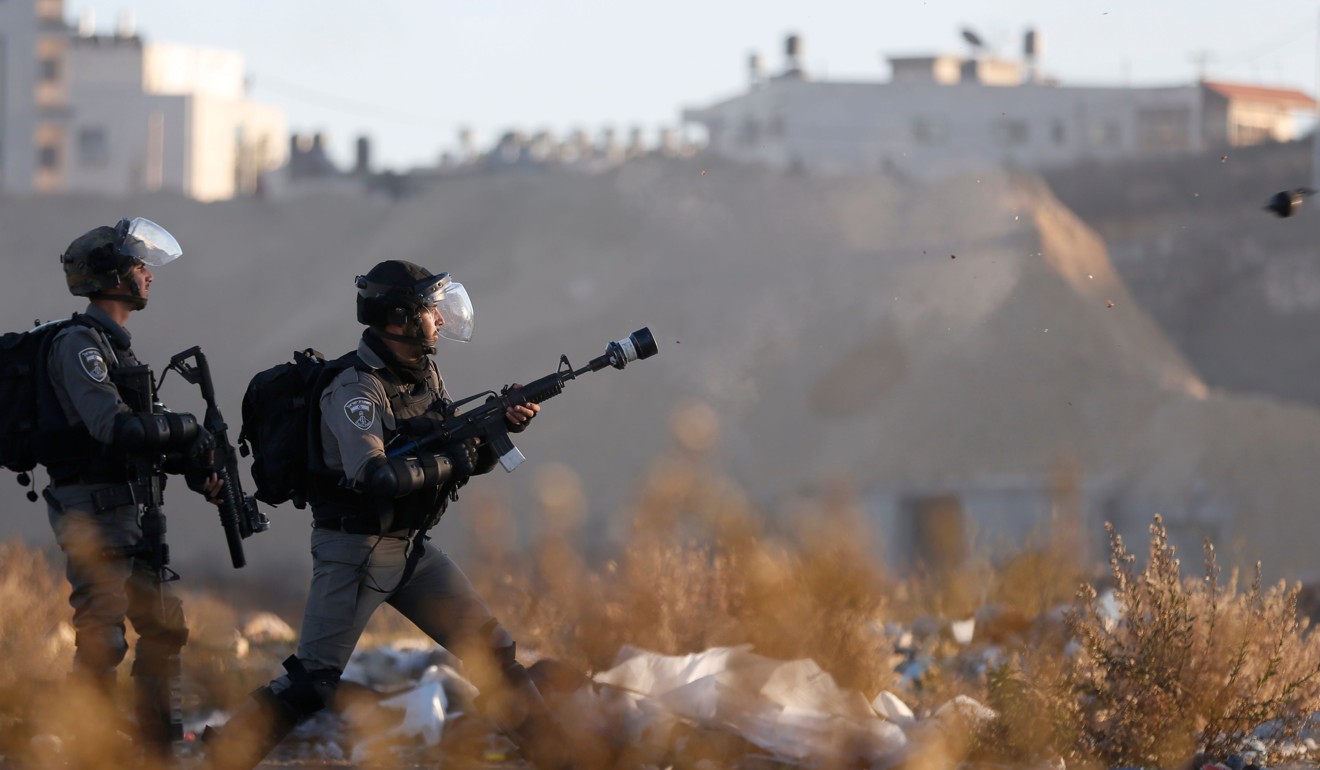
Clashes were also reported on the border between Gaza and Israel.
Three Palestinians, two of them in Gaza, were wounded by live ammunition and 12 were hit by rubber-coated steel pellets, according to Red Crescent paramedics and health officials.
Dozens more suffered from tear gas inhalation, medics said.

Trump’s seismic policy shift on Jerusalem has angered Arabs and Muslims who view it as an expression of blatant pro-Israel bias on one of the region’s most explosive religious and political disputes.
Jerusalem is home to major Muslim and Christian shrines, as well as Judaism’s holiest site. The Israeli-annexed eastern sector, captured by Israel in 1967, is sought by the Palestinians as a future capital, while Israel says it won’t relinquish any part of Jerusalem.
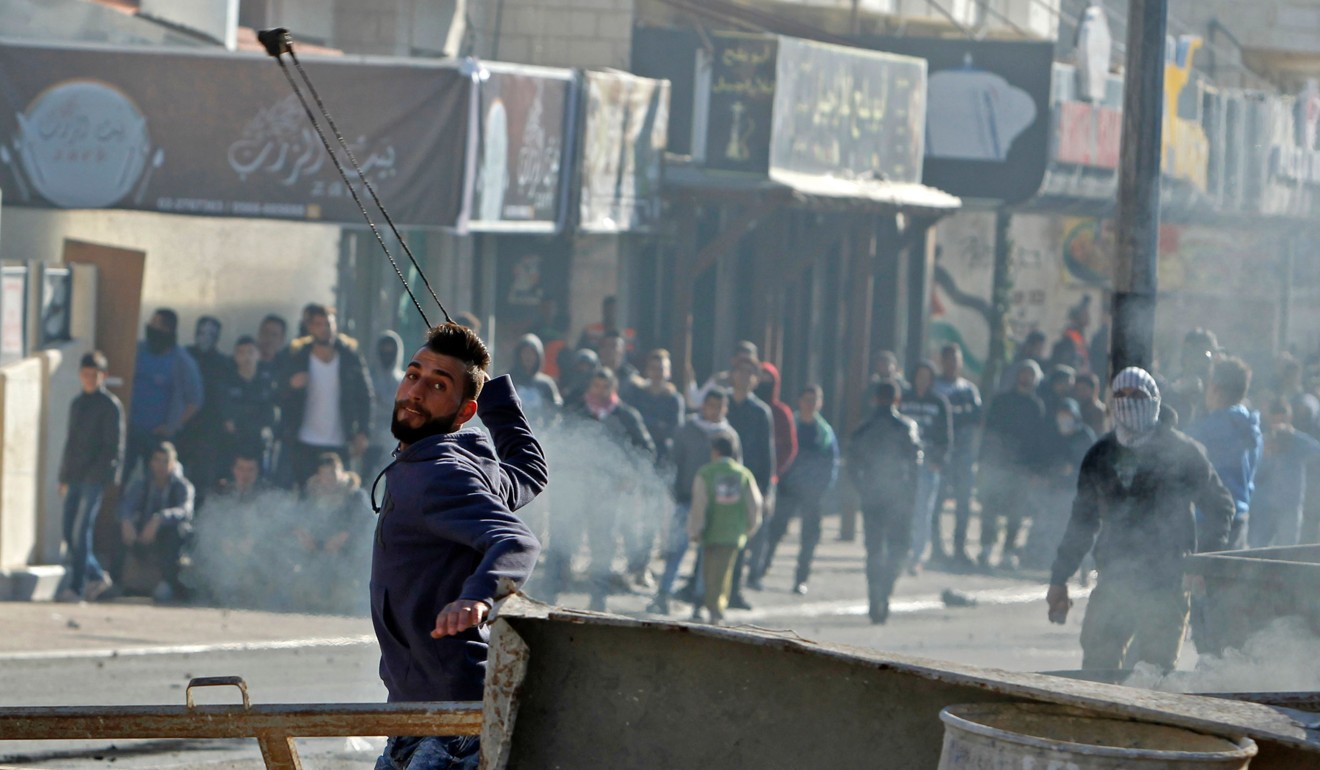
Palestinian political groups had called for massive demonstrations Friday in the West Bank, Gaza Strip and east Jerusalem – the lands captured by Israel in 1967 and sought for a Palestinian state.
Separately, the Gaza-based leader of the Islamic militant Hamas agitated for a third uprising against Israel.
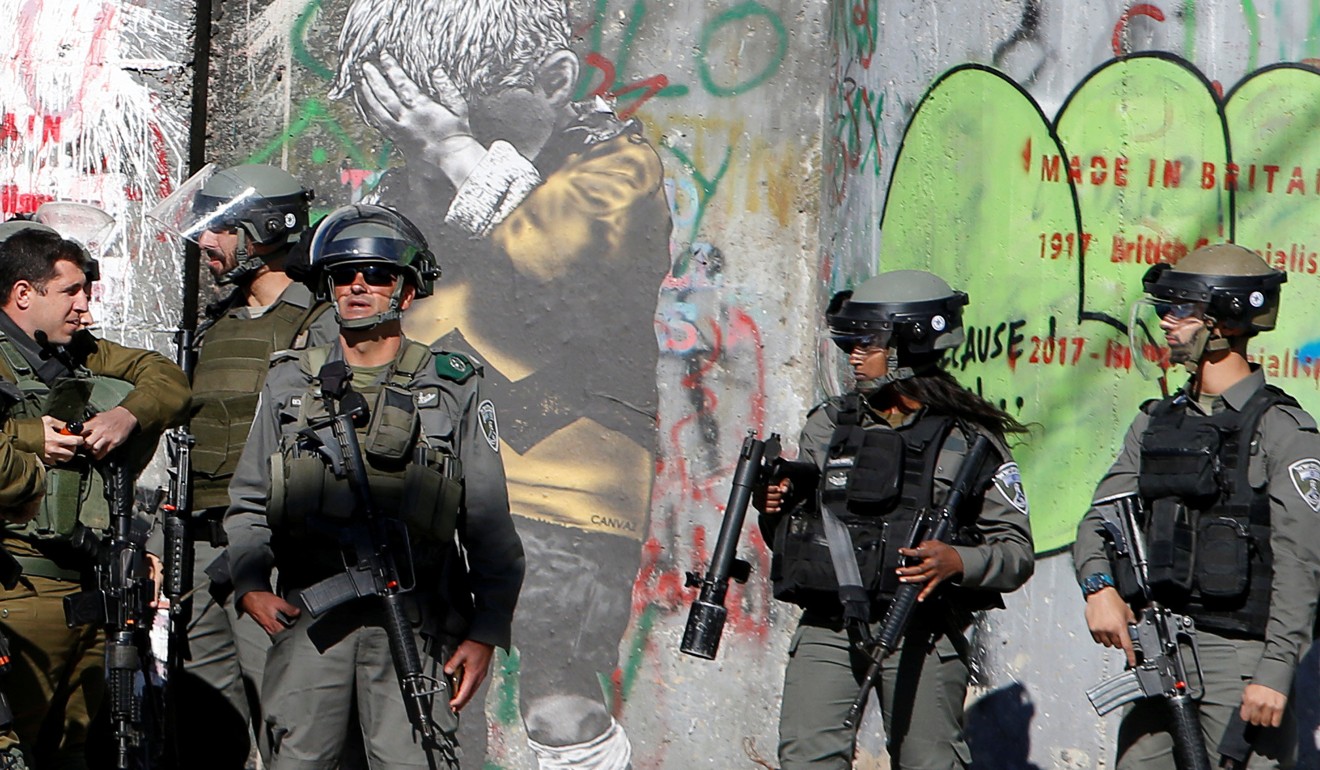
On Friday, the militant al-Qaeda network urged followers around the world to target vital interests of the United States, its allies and Israel. A statement posted on al-Qaeda’s media arm as-Sahab called for holy war and described America as an oppressor of Muslims.
Street protests were held Friday across the region. Marches were staged in Iran, Indonesia, Malaysia, Pakistan and Jordan.
In the Jordanian capital of Amman, hundreds of protesters chanted “Jerusalem is Arab” and “America is the head of the snake”.
Demonstrators stomped on a poster that showed Trump alongside a Nazi swastika.
Thousands of worshippers at a traditional flashpoint, Jerusalem’s OId City, dispersed quietly after noon prayers.

The Old City is home to the al-Aqsa Mosque compound, which is Islam’s third holiest shrine and stands on the remnants of Judaism’s holiest site. One of the compound’s outer walls is the holiest site where Jews can pray.
In the past, Israeli authorities often imposed age restrictions, barring younger Muslims from entering the al-Aqsa compound during periods of tensions, but did not on Friday.

The preacher at al-Aqsa told worshippers that the city will “remain Muslim and Arab”.
“All we want from the Arab and Muslim leaders is action and not statements of denunciation,” Sheikh Yousef Abu Sneineh said to the around 27,000 worshippers.
Around 2,000 people later gathered in the plaza around the mosque, chanting: “With our soul and blood, we will defend al-Aqsa and Jerusalem.”
For decades, the US had professed neutrality on the fate of Jerusalem, in line with an international consensus that the fate of the holy city should be determined in negotiations.
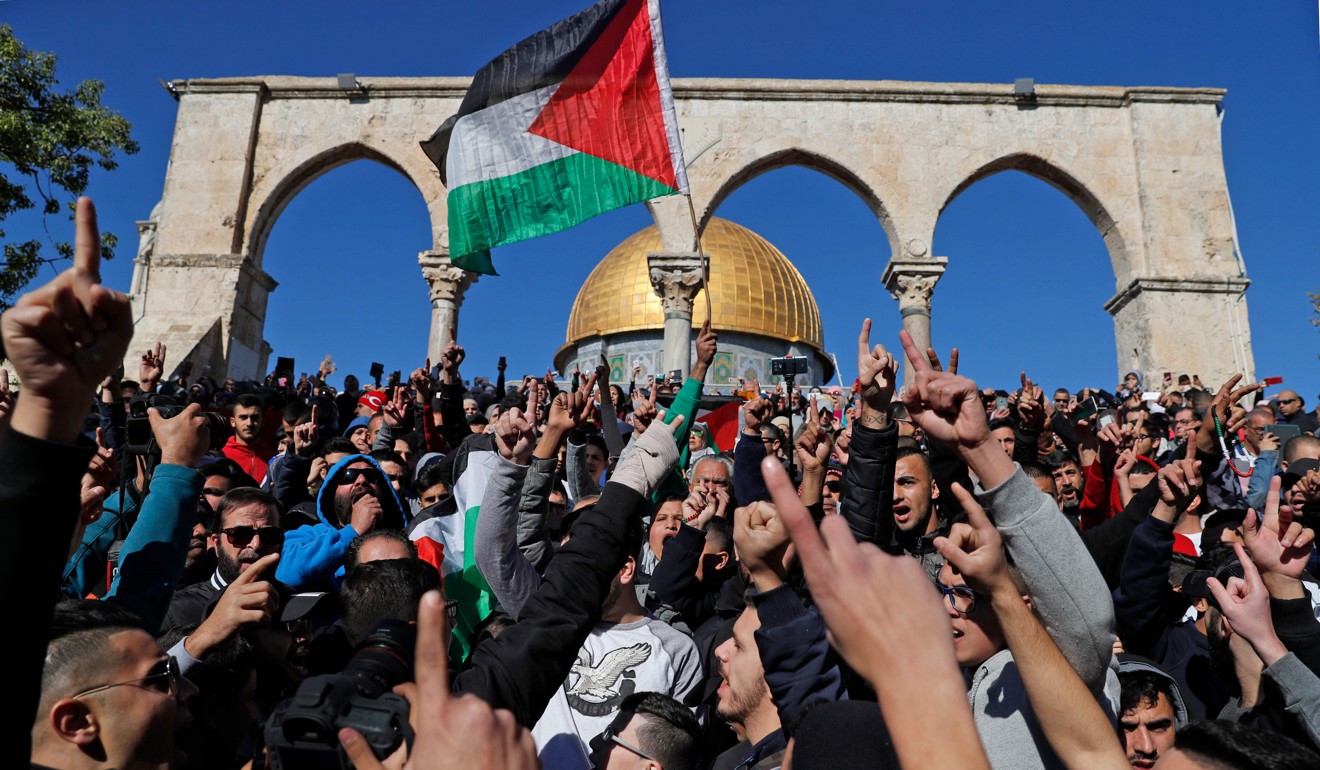
Trump’s dramatic policy shift, announced Wednesday, has triggered widespread international condemnation, including from US allies. Several European leaders have warned the US shift could further destabilise the region.
But on Friday, US Secretary of State Rex Tillerson said any final decision on the status of Jerusalem will depend on negotiations between Israelis and Palestinians.
“With respect to the rest of Jerusalem the president ... did not indicate any final status for Jerusalem,” Tillerson said, speaking at a press conference in Paris. “He was very clear that the final status, including the borders, would be left to the two parties to negotiate and decide.”
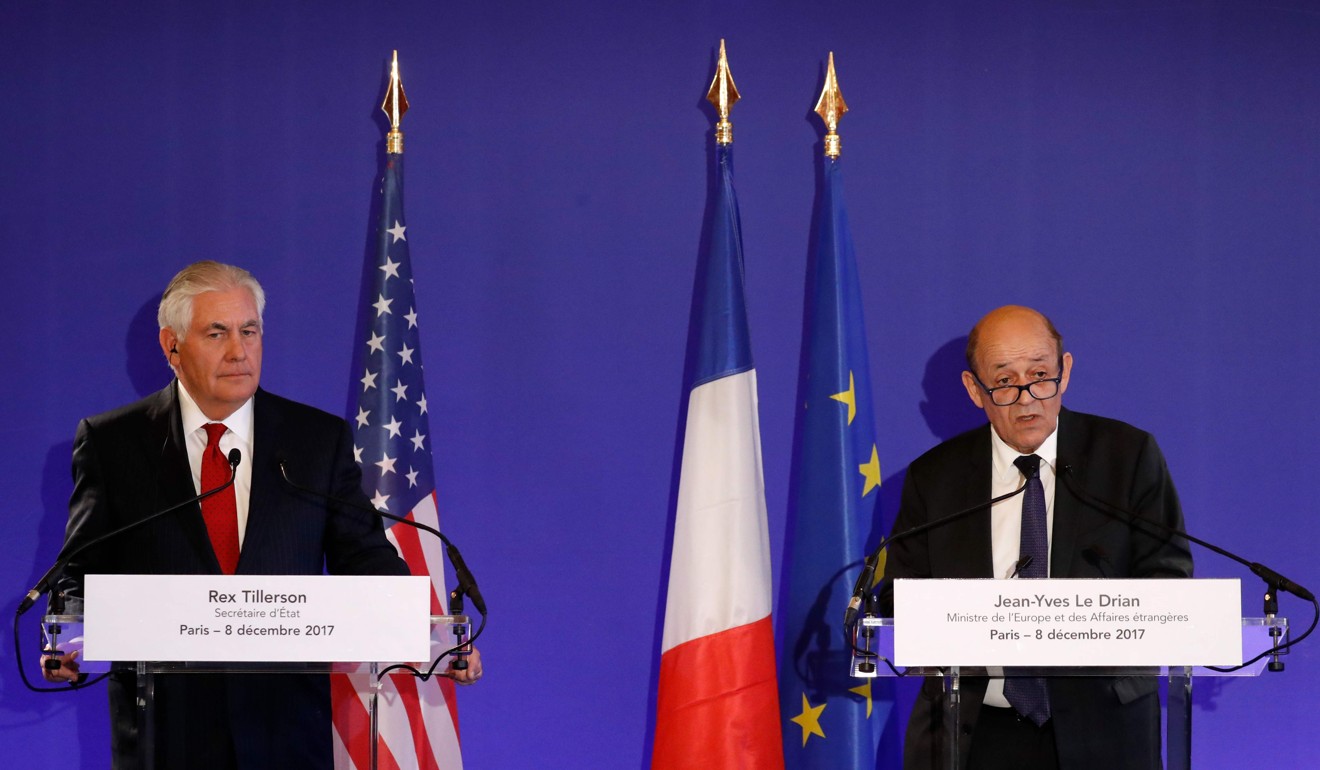
Despite the verbal recognition, Trump signed a waiver keeping the US embassy in Tel Aviv for at least the next six months, rather than moving to Jerusalem.
Tillerson said it was unlikely the embassy would move anytime soon, saying that it would “probably not [move] next year” either. It is expected to take several years to make the transition, both for security and other reasons.
Earlier in Paris, French President Emmanuel Macron said after meeting Lebanese Prime Minister Saad Hariri that he was “launching an appeal for calm and responsibility”.
Hariri said the US decision “will further complicate the peace process and pose an additional challenge to the stability of the whole region”.
Additional reporting by Reuters

